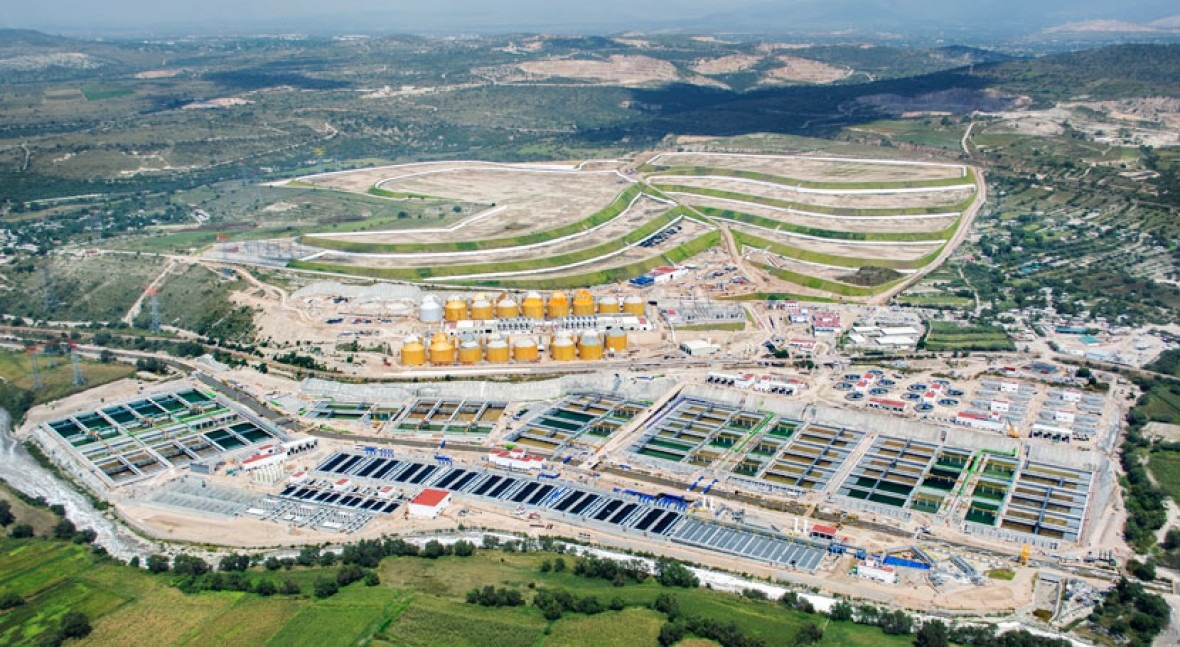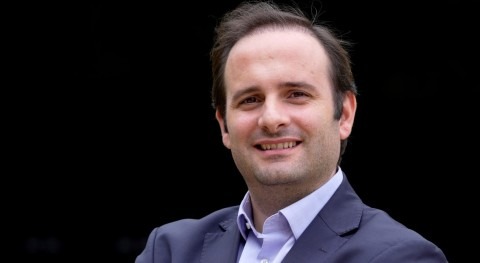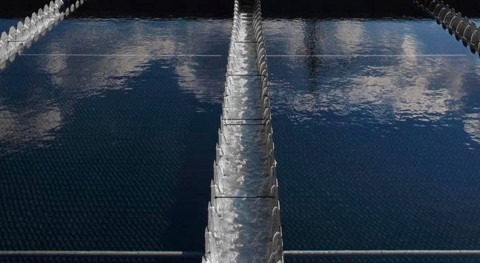As children, they teach us at school that the natural water cycle is a process of transformation and circulation of water on Earth. Water circulates through solid, liquid and gas states: it evaporates from the sea and then falls as precipitation over mountains, as snow or rain, to then flow over the surface through rivers and lakes or underground in aquifers, until it returns to the sea. Out of all that water, only 3% is freshwater and only 0.3% can be harnessed.
People should know what is behind an everyday action such as opening the tap and having quality running water, 24 hours a day, 7 days a week. For that, further training on the urban water cycle is essential. This cycle is how people in cities interact with the natural water cycle: a circular path from water withdrawal from the environment, until it is returned to it, that amounts to only 20% of the water used by humans. The rest is used for irrigation purposes.
In this article, ACCIONA Agua shows its vision of the urban water cycle through a cycle of continuous improvement that connects design and construction with operation and maintenance, through research, development and innovation (RDI). Our goal is to ensure the sustainability of urban water management at all stages: withdrawal, desalination, drinking water treatment, distribution, supply, sanitation, waste water treatment and reuse.
As said earlier, the first stage of the urban water cycle is withdrawing water from the natural environment. That is, from reservoirs, rivers, lakes, springs, groundwater aquifers or even the sea, using engineering works such as dams, weirs, tunnels, wells and water conveyance structures. An example of that is New Cairo, managed by ACCIONA Agua, with a water flow of 500,000 m3/day.
Since the design of water abstraction points depends on the environmental impact and the amount and quality of water available, management companies such as ACCIONA Agua have engineers and hydrogeology and water tools to optimise water withdrawal from all potential sources. Drinking water availability in Spain is scarce, unevenly distributed, poorly regulated and there is little sharing.

Figure 2: New Cairo water abstraction point.
To ensure proper use, especially of drinking water, water withdrawn must undergo treatment with different systems: from simple chlorine disinfection to complex treatments to make it potable, or even sophisticated desalination processes, in order to supply a suitable quality and quantity of water.
To address water scarcity issues, ever present in Spain, Spanish engineering and construction companies, including ACCIONA Agua, thanks to their RDI, have become world-renowned leaders in water treatment, and particularly in desalination. Companies enhance water quality control processes at all stages and optimise physical, chemical and biological water treatment procedures to minimise waste and energy consumption, while maximising the volume and quality of water produced. An example of this are the 240,000 m3/day treated at the desalination plant of ACCIONA Agua in Torrevieja, the plant with the largest production in Europe.

Figure 3: Desalination plant in Torrevieja
Water is often withdrawn far from where it needs to be used, so water conveyance and distribution systems take it to users. This involves tanks to store water, pipelines to transport it, pumping systems that increase the pressure so that it gets farther, connections to dwellings, meters to measure consumption and share costs among users, and, finally, the indoor facilities we all know: taps, showers, bathtubs, sinks, toilets, appliances, irrigation systems, etc.
ACCIONA Agua manages more than 5,000 km of drinking water networks, where it optimises user demand by improving system efficiency, automating processes, reducing non revenue water, optimising energy consumption, developing reading-invoicing-payment collection systems with remote reading IoT technologies that are part of smart cities, adjusting maintenance costs and seeking financing to resume investments in infrastructure renovation and expansion. These investments have been paralysed for years, due to political short-termism and excessive red tape; jurisdiction over water is fragmented into more than 8,000 local governments. It is important to educate and increase public awareness so that users understand what they pay for in their bill and know they are responsible for reducing their consumption and reusing water.

Figure 4: Water distribution network in Andraxt
Once it has been used, waste water from cities is collected together with storm water by drainage and sewerage systems, with connections from each dwelling, sewers that combine and concentrate it, and pumping systems that send it to the next stage of the urban water cycle. To do that, the work of ACCIONA Agua is essential, with more than 6,000 km of sanitation networks managed using telemetry systems, preventive maintenance plans and plans to manage infrastructure assets, preventing them from collapsing and damaging buildings.

Figure 5: Sanitation control centre in Valencia
The next stage is waste water treatment, where ACCIONA Agua designs, operates and maintains complex treatment systems that initially remove insoluble solids with grids, filter sands in labyrinths and separate grease and floating matter in degreasers. Afterwards solids and foams are clustered in primary settling tanks, reducing organic matter and sludge in biological reactors and secondary settling tanks. Finally, microorganisms are removed with tertiary treatment that reclaims waste water, while optimising the waste generated, reducing the consumption of reagents and even generating energy, as in the Atotonilco waste water treatment plant, the largest in the world, managed by ACCIONA Agua, and treating 3,628,800 m3/day.

Figure 6: Atotonilco waste water treatment plant
Reclaimed water is increasingly used for irrigation, and even domestic reuse, closing the loop of the urban water cycle (a circular economy paradigm). Direct reuse can be done without going back to the natural water cycle, given that one of the main ways for the urban cycle to have less of an effect on the natural cycle is reusing water, thus reducing the volume withdrawn from the natural cycle, and improving the sustainability of the integrated water cycle through responsible use.
Ultimately, water that has been used by people is returned to the natural environment through discharges and infiltration: with even better quality that the water withdrawn, treated and reclaimed water continues its natural cycle.
To ensure the sustainability of the urban water cycle, we need to increase the investment in infrastructure renovation and expansion. For that, public authorities who own the infrastructure have to use special tariffs to raise income for the construction works in master plans and projects that design and build departments of companies such as ACCIONA Agua conceive. These are designed using BIM systems, based on GIS, mathematical models and artificial intelligence analysis of the big data obtained through multiple sensors installed.

















